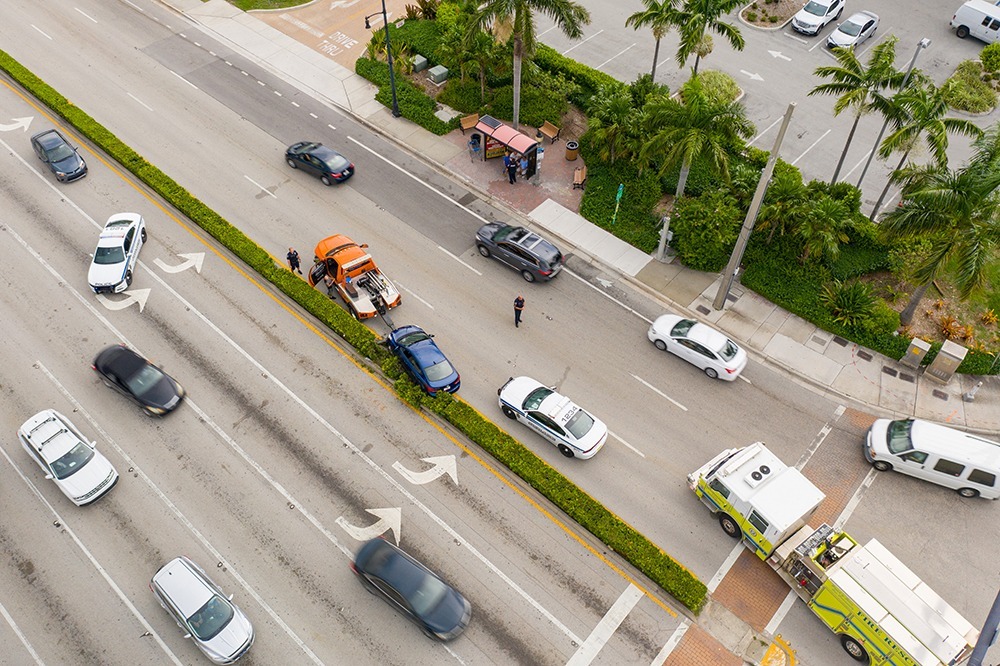Who Pays After an Uber or Lyft Crash? Rideshare Liability Explained
Share:
Uber and Lyft have become part of everyday life. With just a few taps, a driver shows up to take you home from the airport, to dinner with friends, or even to a doctor’s appointment. For many, ridesharing is safer and more convenient than driving themselves.
But as rideshare use has exploded, so have accidents involving these services. And when they happen, victims often find themselves facing a complicated legal maze. Unlike a typical car crash where two drivers exchange insurance, a rideshare accident introduces corporate insurers, app-based rules, and multiple parties who may all share responsibility.
So, who pays when an Uber or Lyft ride goes wrong? Let’s unpack the rules, the pitfalls, and what every passenger, driver, or pedestrian should know.
Why Rideshare Accidents Are More Complex
On the surface, rideshare accidents look like any other car accident, but liability is trickier. That’s because rideshare drivers are independent contractors, not employees. Uber and Lyft argue this distinction shields them from direct liability.
Instead, liability hinges on whether the driver was actively working “in the app.” That single fact can mean the difference between limited coverage from the driver’s personal policy and up to $1 million in commercial coverage from Uber or Lyft.
Statistic: The University of Chicago found that rideshare services contributed to a 2–3% rise in U.S. traffic fatalities, amounting to thousands of deaths each year. With rideshare-related accidents on the rise, understanding liability is more important than ever.
The Three Phases of Rideshare Insurance Coverage
One of the most confusing parts of a rideshare accident is figuring out whose insurance actually applies. Unlike traditional car accidents, where responsibility usually lies with the at-fault driver’s policy, Uber and Lyft have layered insurance systems that change depending on the driver’s status in the app. Was the driver off duty, waiting for a ride request, or actively transporting a passenger? That single detail can mean the difference between being stuck with the driver’s limited personal insurance or tapping into Uber or Lyft’s $1 million commercial policy. Understanding these three distinct “phases” of coverage is critical because it determines how much compensation may be available to pay for your medical bills, lost wages, and pain and suffering after a crash.
Driver Offline (App Off): If the driver is not logged into Uber or Lyft, the rideshare company is completely off the hook. Any accident falls under the driver’s personal auto insurance policy, just like any other collision.
App On, Waiting for a Ride Request: Here, Uber and Lyft provide contingent coverage, but only if the driver’s personal insurance won’t cover the damages:
- $50,000 per person for bodily injury
- $100,000 per accident total for bodily injury
- $25,000 for property damage
This coverage is modest compared to what’s available when the driver is actively transporting a passenger.
En Route or With a Passenger: This is when the big policy kicks in. From the moment a driver accepts a ride until the passenger is dropped off, Uber and Lyft offer up to $1 million in liability coverage, plus uninsured/underinsured motorist coverage in many cases.
Example: If you’re in an Uber and another driver—who turns out to be uninsured—runs a red light and hits you, Uber’s uninsured motorist coverage may cover your medical bills and lost wages.
Who Can Be Held Liable?
When it comes to rideshare accidents, liability isn’t always as simple as pointing to one driver and calling it a day. These crashes often involve multiple layers of responsibility, and unraveling who’s legally on the hook can feel like piecing together a puzzle. Unlike standard two-car collisions, rideshare accidents may draw in not just the driver, but also the rideshare company’s insurer, third-party motorists, or even outside entities like automakers or city governments. That’s because accidents are rarely caused by a single factor—distracted driving, unsafe road conditions, and mechanical failures can all overlap.
This complexity often leaves victims facing more than one insurance company at the negotiating table. Each party may point the finger at someone else, creating delays and confusion. For injured passengers or pedestrians, understanding the range of potentially liable parties is the first step in securing the compensation they need. Rideshare crashes often involve multiple parties. Depending on the facts, liability could fall on:
- The rideshare driver – if distracted driving, speeding, or reckless behavior caused the crash.
- Another driver – if the accident was the fault of a third-party motorist.
- Uber or Lyft’s insurer – when the driver was logged in and transporting passengers.
- Vehicle manufacturers – if a defect (e.g., faulty brakes, airbag failure) contributed to the crash.
- Local governments – in rare cases, unsafe road conditions or traffic control failures may be factors.
Because responsibility may be split across several parties, accident victims often find themselves negotiating with multiple insurers simultaneously.
Common Complications in Rideshare Accident Claims
While Uber and Lyft advertise their $1 million insurance coverage, accessing it isn’t always straightforward. Victims face hurdles like:
Coverage disputes: Was the driver actually on the app? Companies often deny claims by arguing the driver wasn’t logged in.
Independent contractor loophole: Uber and Lyft emphasize that drivers aren’t employees, limiting direct liability claims.
Multiple insurers pointing fingers: The driver’s personal insurer may say the rideshare policy applies—and vice versa—delaying payouts.
Passenger confusion: Many passengers don’t even realize they’re covered under Uber or Lyft’s policy.
Without legal help, victims risk being stuck in a drawn-out battle or pressured into accepting a lowball settlement.
What Damages Can Victims Recover?
Victims of rideshare accidents may be entitled to compensation for:
- Medical bills – emergency care, surgeries, therapy, rehab, and future care.
- Lost wages – plus loss of future earning capacity if injuries prevent returning to work.
- Pain and suffering – for physical and emotional toll.
- Property damage – repair or replacement of your car or belongings.
- Wrongful death damages – in cases where a family member is killed in the accident.
Data Point: The Insurance Information Institute reports that the average bodily injury claim from auto accidents exceeds $20,000—but in rideshare accidents involving catastrophic injuries, the costs often soar far higher.
What Damages Can Victims Recover?
If you’re injured in a rideshare crash, here’s how to protect your claim:
- Call 911. Always prioritize safety and medical care.
- Get medical attention. Even minor injuries should be documented.
- Take photos and video. Capture the cars, license plates, scene, and your injuries.
- Exchange information. Get details from the rideshare driver, other drivers, and witnesses.
- Report in the app. Uber and Lyft have in-app accident reporting features.
- Contact an attorney. The faster you involve a lawyer, the better your chances of cutting through the insurance red tape.
Why Legal Representation Is Critical
Rideshare accidents combine the challenges of corporate insurance, multiple defendants, and complex liability laws. Uber and Lyft hire skilled legal teams whose job is to minimize payouts. An experienced rideshare accident attorney will:
- Investigate app activity records to prove the driver’s status.
- Identify all possible sources of coverage.
- Negotiate aggressively with insurers to prevent low settlements.
- Pursue litigation if necessary to hold companies accountable.
Without representation, victims often settle for far less than they’re entitled to.
Final Thoughts
Ridesharing makes life easier, but when accidents happen, the claims process is anything but. Liability depends on whether the app was active, which policy applies, and how insurers position their defenses. Victims need to know their rights and be prepared for resistance from powerful companies.
At DuFault Law, we help rideshare accident victims across Florida and Georgia navigate this complex landscape. We fight for fair compensation, whether you were a passenger, driver, pedestrian, or another motorist injured in a crash involving Uber or Lyft.
Injured in a Rideshare Accident? Call DuFault Law Today.
Ridesharing makes life easier, but when accidents happen, the claims process is anything but. Liability depends on whether the app was active, which policy applies, and how insurers position their defenses. Victims need to know their rights and be prepared for resistance from powerful companies.
- Call us at (239) 422-6400
- Email us at contact@dufaultlaw.com
- Or Visit our Contact Page to schedule a consultation



Comments are closed